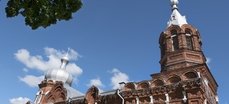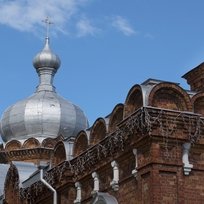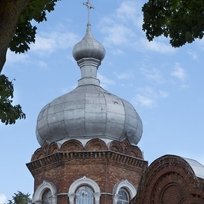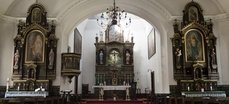The Byzantine style church was built in 1909 for Russian Tsarist government funds. Initially, it was a Russian military church, built on S. Venclauskienė’s (the Jakševičiai) plot of land without legal ownership base, which turned into a scandalous subject of proceedings. Her husband lawyer K. Venclauskis filed a lawsuit and won it. The plot had to be returned, and the church, taken away. However, after the intervention of the Ministry of War, it was agreed with K. Venclauskis and the church was left in place. Upon withdrawal of Russians, the church was owned by German occupation authorities and was turned into a warehouse. After World War I, in June, 1919, thanks to the concern of chaplain of 3 Lithuanian Army Infantry Regiment bishop Martynas Jonaitis, the church was redecorated and given over for spiritual needs of 3 Lithuanian Army Infantry Regiment. However, Lithuanian troops soon left Šiauliai and Masses were no longer held in the church; the church belonged to the Ministry of National Defence.
On July 6, 1919, Šiauliai Dean Julijonas Jasenskis consecrated the church and gave it the title of St George the Martyr. After prolonged care and great efforts the church was given over into the hands of Samogitian bishop. On October 10, 1923, upon the order of the Samogitian bishop St. George’s church was granted parish rights. On August 24, 1927, three bells located in the church tower were consecrated. In 1932, the organ was fitted, it was built by a Czech citizen Otto Kratovilo.
In the evening of March 17, 1976, the church roof, ceiling, organ, benches and the great tower burnt down (the church had two towers: 29 and 25 meters high). Because the presbytery with great altar were saved, services continued to be held, having put a plank wall to screen off the burnt church. During nine months the church was rebuilt, central heating, water supply, sewerage, electricity were installed. Decoration of the church was completed on October 23, 1977. Church interior is richly decorated with paintings. There are many artist J. Janulis’ works, P. Kalpokas’ painting ‘St. Zita’, wood carved statues of saints here.













Reviews